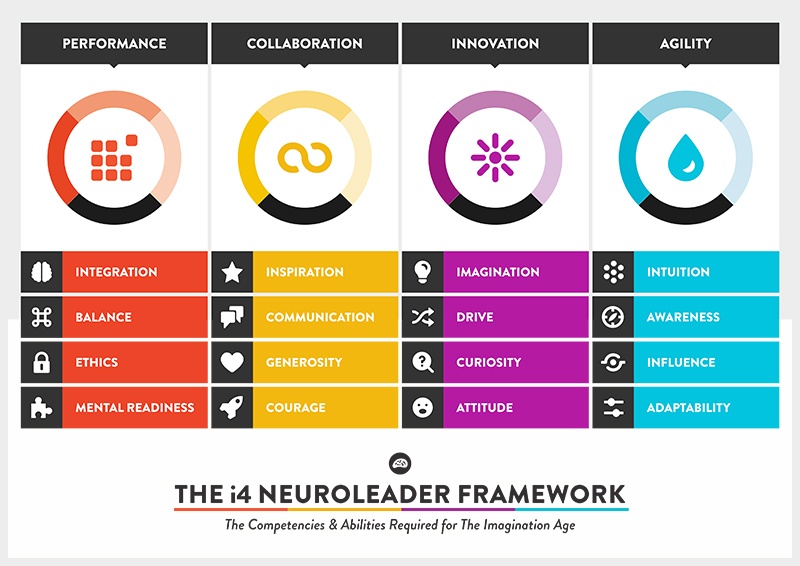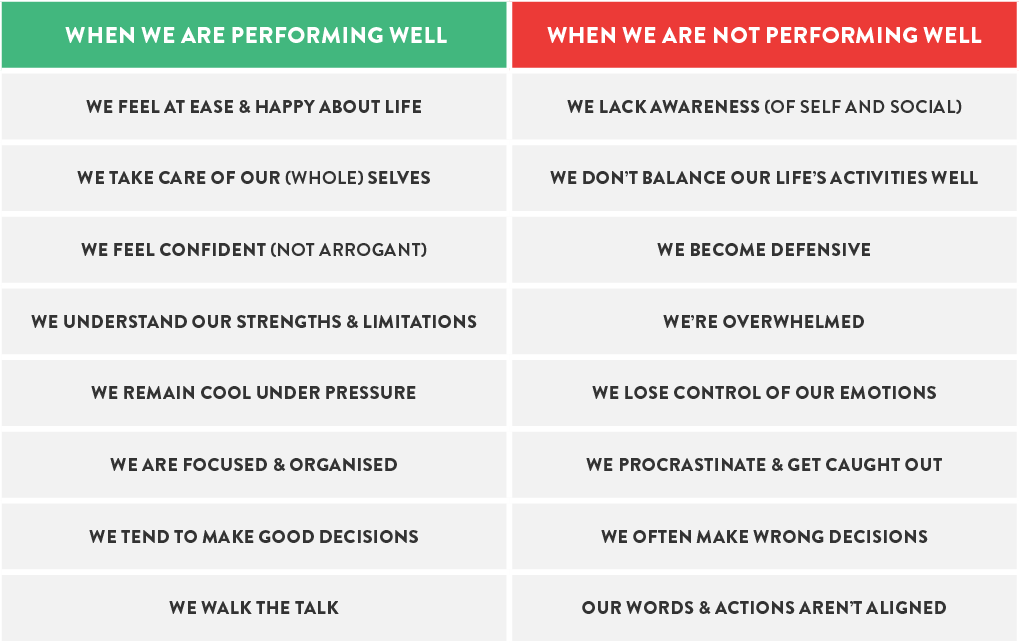
Can't help but feel billions of dollars are wasted on leadership development across the world. Too many approaches seem to be either overly theoretical or conversely just about techniques. They seem to miss the most important part of the leadership jigsaw... the person.
At Mantle as practitioners we have been putting emphasis on helping leaders work on their own thinking and mindsets. Simply because it is our own thinking that drives much of our behaviour not our skills and sometimes not even our work and team context.
Sharing the  with the leaders we work with is one of the most empowering things we do. Not only do they get useful and actionable feedback they get an insight into how they can boost the brain and body processes that support the 21st Century competencies of performance, collaboration, innovation, and agility.
with the leaders we work with is one of the most empowering things we do. Not only do they get useful and actionable feedback they get an insight into how they can boost the brain and body processes that support the 21st Century competencies of performance, collaboration, innovation, and agility.

In this article, I will explore performance, which refers to the optimal level both physical and mental that a person is able to achieve when implementing a task.
Wellness is a big topic and has received much attention of late. In the USA, employers spend over $8 billion per year on wellness programmes. Many organisations focus on providing physical ‘wellness initiatives’ to their employees – flu jabs, discounted gym memberships, a fruit bowl and even space at work to exercise with personal trainers. Yet this is just the tip of the iceberg. Often lacking is mental and emotional wellbeing. We consider wellness from the perspective of awareness, energy, emotional regulation, and congruence.
These areas are similar to the HBR study of 19,000 employees globally. Findings showed that leaders who sustainably meet the four core needs (focus, energy, value, purpose) of their people impact, employee engagement, job satisfaction and stress in positive ways – even more so when they model the behaviours themselves.
Only 25% of leaders model sustainable work practices. Employees of these leaders are 55% more engaged, 72% higher in wellbeing, 77% more satisfied with work and 1.15 times more likely to stay.
If we look at the leader’s influence on wellbeing – it may mean the leader needs to go against the grain to encourage work-life balance, e.g. taking lunch breaks rather than long hours sitting at one’s desk.

If we expect our employees to perform at peak then they need to be emotionally, physically and mentally fit. Fitness depends on how well our brain-mind-body system is functioning, how we prepare for a task, how we regulate and balance our daily activities and how congruent we are in terms of values and thinking.
How often do we find employees working long days, continually exhausted, unable to engage, feeling dissatisfied, with too little time for sleep, exercise, sit-down meals, and family? Executives suffer from attention deficit – an inability to pause and visualise a future beyond the annual financial statements.
Only 33% of people surveyed by the  took the time to relax and completely disconnect. People push themselves harder than ever to keep up. The problem is that time is a finite resource. Energy as a resource, on the other hand, can be renewed and expanded by intentionally practising healthy rituals. This can seem counterintuitive, for example, going to bed earlier will allow you to feel more rested and motivated to exercise.
took the time to relax and completely disconnect. People push themselves harder than ever to keep up. The problem is that time is a finite resource. Energy as a resource, on the other hand, can be renewed and expanded by intentionally practising healthy rituals. This can seem counterintuitive, for example, going to bed earlier will allow you to feel more rested and motivated to exercise.
Organisations like Sony, Nokia, Deutsche Bank and Ford have invested in supporting their employees to get more done in less time with higher levels of engagement and more sustainably through an Energy Renewal Programme. This programme focuses on taking an energy audit and identifying rituals for building renewed physical, emotional, mental and spiritual (meaning & purpose) energy. Physically this includes sleep – earlier bedtime, nutrition – smaller healthy meals and light snacks, brief but regular breaks and 20 minute walks giving an emotional and mental breather.
It also looks at emotions, how to feel more positive, express appreciation, breathe and take different perspectives. From a mental perspective, how to focus is considered as distractions and task switching are costly. Switching tasks can increase the amount of time needed to complete the primary task by 25%. It is more productive and energy efficient to focus for 90 – 120 minutes (ultradian sprints) and then take a break. In a Georgetown University study, only 21% of employees said that they were regularly able to focus on one thing at a time.
In order to keep us performing at our best, it is important to ensure we have some basic rituals and actions in place. The Mental Health Foundation NZ has identified five ways to wellbeing namely Be active, Connect, Give, Take Notice and Keep Learning. Healthy Mind Platter by David Rock and Daniel Siegel is also a useful tool for checking in to see that we incorporate important elements into our daily practice.
Leadership starts with awareness. Step one is as Plato said, “Know Thyself”. By strengthening the observer within we gain the power of choice. The choice on what to believe, feel, think and say. According to Viktor Frankl...
Between stimulus and response, there is a space. In that space lies our freedom and our power to choose our response. In our response lies our growth and our happiness.
Mindfulness is a way to train our brains to listen to our own thoughts - paying attention to what matters (awareness). We can only be mindful if we have minds and bodies that are mentally and physically healthy.
If we are not in a healthy state, we act on survival instinct and tend to fight, flee or freeze to protect ourselves. As leaders, we may need to support our people to work in a quiet space and to help build their attentional self-control.
Another couple of methods for enhancing awareness involve external focus – one of being open to feedback and another is strategic thinking. In the case of feedback – this should be as close to the event as possible, open and direct allowing for fast correction. This allows people to learn and change course on the fly. Feedback allows what may have been hidden to the person to surface.
Strategic thinking is about being able to take a wide-angle view, put yourself in other's shoes and look ahead at possibilities, understanding your environment, the big picture, and influences. You may ask ‘what would the other person feel, think, say or do?’ or ‘how will this look in 6 months' time?’ or ‘what can I learn from this?’. By practising seeing different perspectives we build our awareness muscle.
A third practice is to notice and understand how you are feeling, how to change your emotional state or choose to simply be. We are often in threat – anxiety and overwhelm are indicators of this.
As leaders, we can also create threat for others inadvertently. For example, saying ‘I would like to give you some feedback’, or ‘could I have a few words before you leave at the end of the day’, will immediately trigger a threat response and we go to the worst-case scenario.
We may have positive feedback to share or want to ask someone if they could step up into a 2IC role while we’re away…nevertheless, the person will spend most of the rest of the day in a state of threat (read reduced executive function) until they have certainty. By understanding that the brain is protecting us from social threat, we can manage our emotions accordingly and so be in a more balanced state for optimal performance.
This practice is about alignment with our values, word-action alignment, and thinking-feeling and doing alignment. We need to be able to ensure we walk the talk and do what we say we will do. If we are not congruent, people will follow our actions no matter what we say.
If as a leader we say work-life balance and being healthy is important, we provide onsite exercise classes and tell people to not answer e-mails outside of work hours yet as leaders we work at our desks starting early in the morning on our second coffee by 9 am, still sending out e-mails at night without time to stay fit and healthy – the words will mean nothing.
People follow what leaders do not what they say. So, role-modelling the behaviours we want in others is key. Humans are wired to mimic. Lionel Tiger, the anthropologist, determined that the average baboon looks at the alpha male once every 20 – 30 seconds for guidance. Human beings aren’t so different and we look to those with the most power, i.e. our leaders, for cues about what to do and how to behave. So without congruency, we can say we hold high certain values but we will not be taken seriously until we make these words come to life.
We have more energy and focus better, and are able to persevere more when we feel that the work we are doing matters and when we live our values daily. We need to clarify priorities, spend time doing what we do best and enjoy and allocate time and energy to most important areas of our lives.
So, stop the crisis mentality and create the environment to sustain well health. Ultimately, performance requires basic abilities but more importantly, it requires body-brain maintenance. The better you take care of yourself and others, the better they will take care of the business.
These Stories on Performance

Authorised i4 Partner of the About my Brain Institute.
Ruth has worked across a variety of industry sectors and from front line to CEO level. She has headed up the Asia Pacific region of a global training & development organisation and specialises in applying theory into practice.
Ruth is a Director of Mantle a New Zealand based leadership development consultancy. An engaging and sought after facilitator, keynote speaker and writer Ruth is passionate about applying leading edge thinking that empowers great leaders in a practical way.
Monday to Friday
9:00am - 5:00pm (AEST)
Sydney, Australia
We reply within 48 hours!
General Business Enquiries:
hello@aboutmybrain.com
Technical Support:
support@aboutmybrain.com
No Comments Yet
Let us know what you think